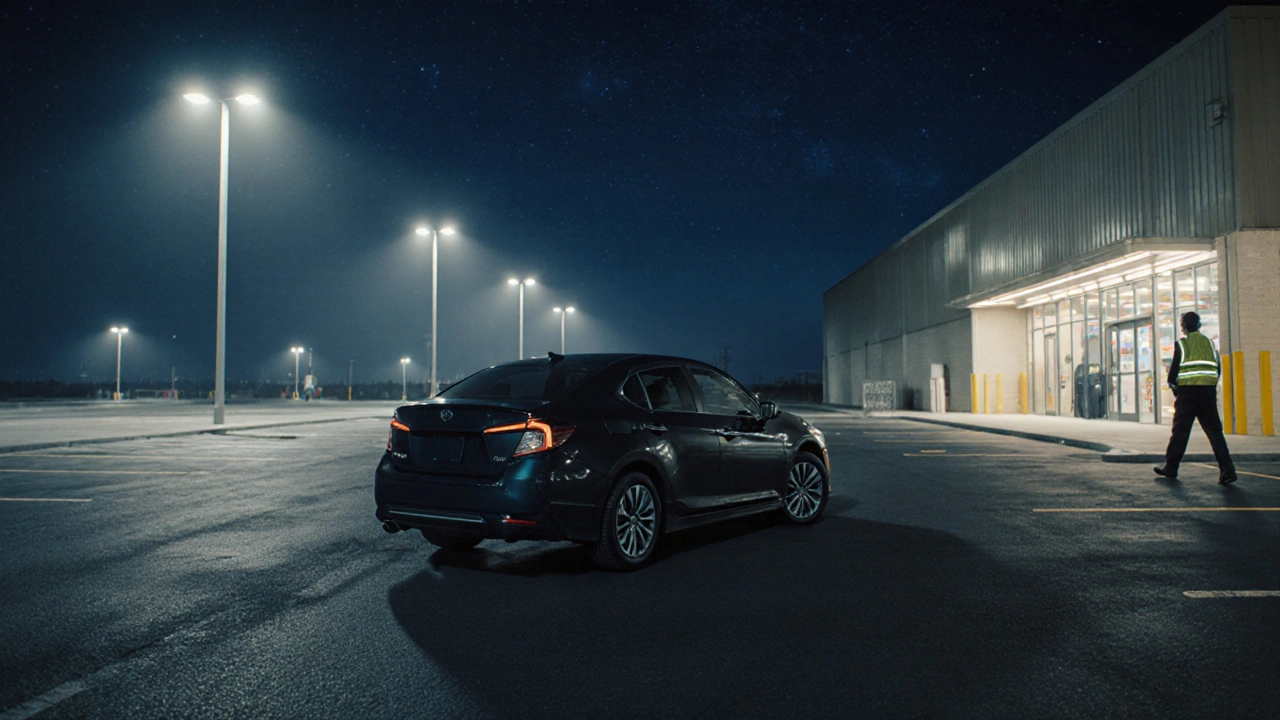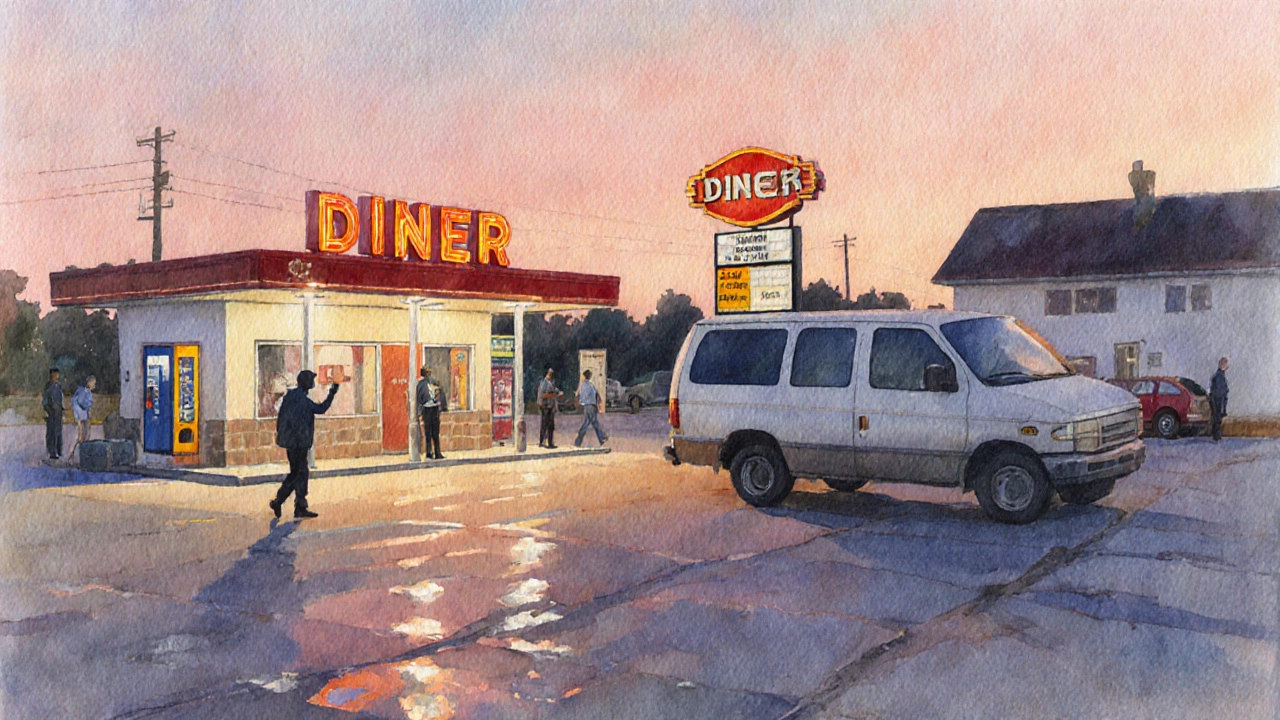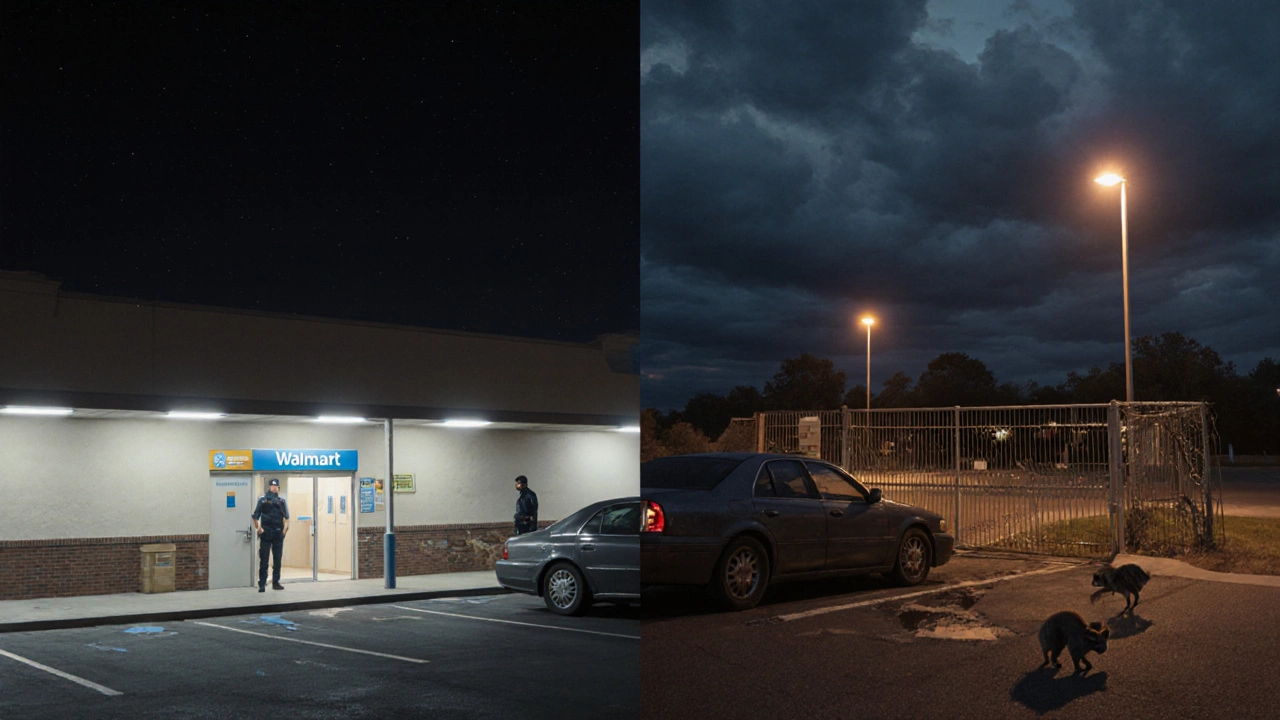Safest Spots to Sleep in Your Car: A Practical Guide
 Oct, 20 2025
Oct, 20 2025
Car Sleeping Safety Score Calculator
Rate potential sleeping spots using the checklist from the article to determine safety level. Enter scores 1-5 for each criterion (5 = excellent).
Is the area well-lit for at least 30-40 meters around the car?
Are there regular passers-by or staff creating natural surveillance?
Are there clear signs allowing overnight parking?
Is the surface flat and paved?
Are restrooms or convenience stores nearby?
Safety Assessment
Overall Safety Score:
Key Findings:
Lighting:
Foot Traffic:
Access Rules:
Surface Condition:
Amenities:
Important Safety Note: This score doesn't replace checking local laws. Always confirm overnight parking permissions at your location.
When you need to catch some shut‑eye in your vehicle, choosing a safe car sleeping location is the first step. A safe car sleeping location is a spot where you can park your car overnight with minimal risk of theft, harassment, or legal trouble.
Why location matters more than anything
Even if you’ve got a sturdy lock, tinted windows, and a privacy curtain, a bad spot will quickly turn a night of rest into a nightmare. The right spot reduces noise, improves lighting, and often has a passive security presence that deters troublemakers. Most people think the safest place is “anywhere with a bright streetlamp," but data from police reports and community surveys show that certain types of venues consistently rank higher for safety.
Top five categories of safe overnight spots
Below is a quick rundown of the five most reliable categories. Each one has been vetted by roadside‑assistance groups, homeless‑services NGOs, and long‑haul drivers who spend nights in their rigs.
- 24‑hour retail parking lots - Stores like Walmart, Costco, and some grocery chains that allow overnight parking.
- Truck stops - Dedicated rest areas for commercial drivers, often with showers and 24‑hour staff.
- State‑run rest areas - Highway pull‑offs maintained by transportation departments.
- Campgrounds and RV parks - Sites that charge a small fee but provide fenced‑in spaces and security patrols.
- Police stations or fire stations - Some jurisdictions allow vehicles to stay for a few hours with officer permission.
How to evaluate a spot on the fly
When you’re driving and spot a potential area, run through this quick checklist. It takes less than a minute but saves hours of stress later.
- Lighting: Is the area well lit for at least 30‑40 meters around the car?
- Foot traffic: Are there regular passers‑by or staff that create natural surveillance?
- Access rules: Look for signs that explicitly allow overnight parking; if the sign is missing, a quick phone call to the store can clear it up.
- Surface condition: Flat, paved surfaces reduce the chance of your car rolling or getting damaged.
- Nearby amenities: Restrooms, vending machines, or a convenience store can make a night much more comfortable.
Comparison table: What each spot offers
| Spot Type | Typical Access Hours | Lighting Quality | On‑site Security | Cost (USD) | Extra Amenities |
|---|---|---|---|---|---|
| 24‑hour retail lot | Open 24 h | High (store‑area lights) | Low (store staff patrols) | Free (most stores) | Restrooms, vending machines |
| Truck stop | 24 h | Medium‑High | Medium (staff on site) | Free‑$2 for premium spots | Showers, diner, fuel |
| State rest area | Varies (usually 24 h) | Medium | Low (sporadic patrols) | Free | Picnic tables, pet areas |
| Campground / RV park | 24 h (with reservation) | High (dedicated lighting) | High (fenced, patrols) | $5‑$15 per night | Electric hook‑up, water, dump station |
| Police / fire station | Limited (often 2‑4 h) | High (station lights) | High (on‑site officers) | Free (with permission) | Immediate assistance if needed |

Practical tips for staying safe inside your car
Even the best spot can turn unsafe if you ignore basic car‑sleep hygiene. Here are the habits that keep you comfortable and out of trouble.
- Lock all doors and roll up windows. Use a secondary lock (like a steering‑wheel lock) for added deterrence.
- Cover windows. A reflective sun‑shade or a DIY curtain made from a sweater blocks prying eyes.
- Keep valuables out of sight. Store bags in the trunk and use a small lockbox if you have critical items.
- Turn on interior lights with a timer. A dim red light signals you’re awake without attracting attention.
- Stay aware of your surroundings. If you hear a disturbance, be ready to move to another spot.
When to avoid certain locations
Not all public places are created equal. Here’s where you should think twice:
- Residential streets: Even if they seem quiet, they lack natural surveillance and can lead to complaints.
- Private property without permission: Stores that post “No overnight parking” can call the police.
- Isolated rest areas: Some rest stops have reported thefts after dark; choose ones with a visible patrol.
- Parking garages: While often well lit, many have strict overnight bans and security cameras that trigger alerts.
Resources for additional help
If you’re sleeping in your car out of necessity, you’re not alone. Many charities and local governments run programs that can bridge the gap between car‑sleeping and permanent housing.
- National Coalition for the Homeless - Provides a directory of safe‑parking programs in major cities.
- Local 211 helpline - Call 211 to get real‑time information on shelters that accept car‑sleepers.
- Truckers Without Borders - Offers low‑cost camping passes for anyone who needs a secure spot.
- City parking ordinances - Review your municipality’s rules; some cities allow “overnight parking zones” specifically for car dwellers.

Case study: A night in a Walmart lot versus a rest area
John, a 34‑year‑old navigating a job loss, tried two different spots. In the Walmart lot, he found bright lights, a restroom, and a store employee who checked the lot every few hours. He slept soundly and left with a fresh bag of groceries. In contrast, a state rest area he tried on a rainy night had dim lighting, no staff presence, and a broken gate that let in a curious raccoon. He woke up to a mess and a flat tire the next morning. The lesson? Consistent human presence and clear lighting usually tip the scales toward safety.
Final checklist before you hit the road
- Pick a spot from the comparison table that fits your budget and needs.
- Call ahead (if possible) to confirm overnight permission.
- Pack a safety kit: lock, window cover, flashlight, water bottle.
- Set an alarm on your phone for a quick check‑in after a few hours.
- Know the nearest emergency services number - 911 in the US, 999 in the UK.
Frequently Asked Questions
Can I legally park overnight at a Walmart?
Most Walmart stores allow overnight parking as long as you stay within the lot boundaries and do not disturb shoppers. It’s best to ask the manager or look for a sign that says “24‑hour parking allowed.”
What’s the safest time to arrive at a truck stop?
Arriving early in the evening (around 6‑8 PM) gives you a chance to claim a spot before the rush of late‑night drivers. Staff are usually on shift, and lighting is at its brightest.
Do rest areas ever charge for overnight stays?
In the United States, most state‑run rest areas are free, but a few states have introduced a nominal fee ($2‑$5) for extended stays to cover maintenance.
How can I keep my car warm in winter while sleeping?
Insulate windows with reflective foil, use a battery‑powered heater rated for indoor use, and wear layered clothing. Never leave the engine running unattended.
Is it safe to sleep in my car at a police station?
If an officer gives you explicit permission, it’s one of the safest options because the area is lit and monitored. However, many stations limit the time to 2‑4 hours.
Finding a safe car sleeping location isn’t a one‑size‑fits‑all recipe, but with the right criteria, a quick checklist, and a few trusted resources, you can turn your vehicle into a reliable, low‑risk place to rest. Stay aware, stay prepared, and remember that every night you make it home safely is a step toward longer‑term security.
